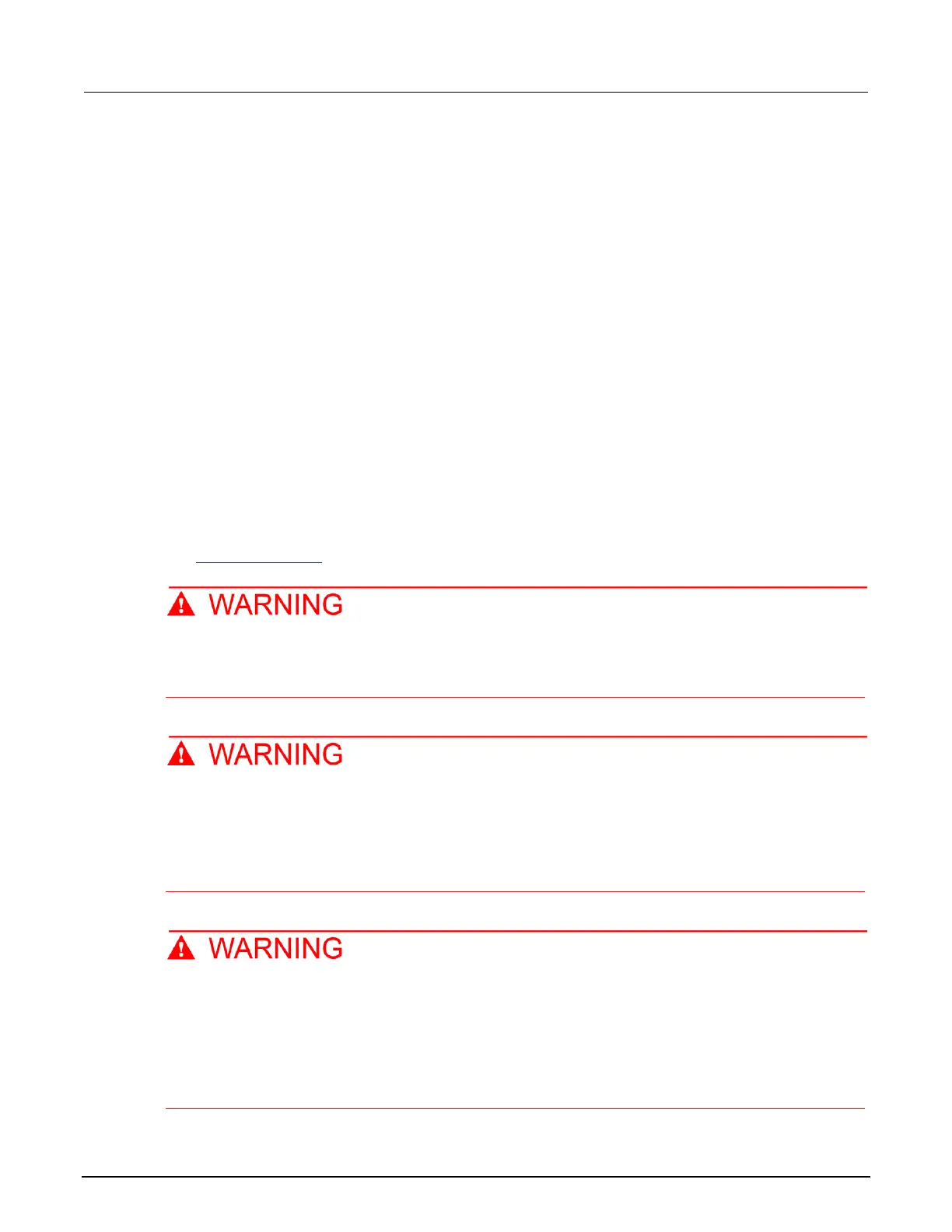Warmup period
Allow the 2600B to warm up for at least two hours before adjusting the instrument.
If the instrument has been subjected to temperature extremes (those outside the ranges stated
above), allow additional time for the internal temperature of the instrument to stabilize. Typically, allow
one extra hour to stabilize an instrument that is 10 °C outside the specified temperature range.
Allow the test equipment to warm up for the minimum time specified by the manufacturer.
Adjustment considerations
When performing the adjustment procedures:
• Make sure that the test equipment is properly warmed up and connected to the correct 2600B
terminals.
• Always allow the source signal to settle before adjusting each point.
• Do not connect test equipment to the 2600B through a scanner or other switching equipment.
• If an error occurs during adjustment, the 2600B generates an appropriate error message. See the
Error summary list (on page 6-2) for more information.
The maximum common-mode voltage (voltage between LO and chassis ground) is 250 V dc.
Exceeding this value may cause a breakdown in insulation, creating a shock hazard that
could result in personal injury or death.
The FORCE and SENSE connectors of the 2600B are rated for connection to circuits rated
Measurement Category I only, with transients rated less than 1500 V
PEAK
. Do not connect the
2600B terminals to CAT II, CAT III, or CAT IV circuits. Connections of the input/output
connectors to circuits higher than CAT I can cause damage to the equipment or expose the
operator to hazardous voltages.
Hazardous voltages may be present on all output and guard terminals. To prevent electrical
shock that could cause injury or death, never make or break connections to the 2600B while
the instrument is powered on. Turn off the equipment from the front panel or disconnect the
main power cord from the rear of the 2600B before handling cables. Putting the equipment
into standby does not guarantee that the outputs are powered off if a hardware or software
fault occurs.

